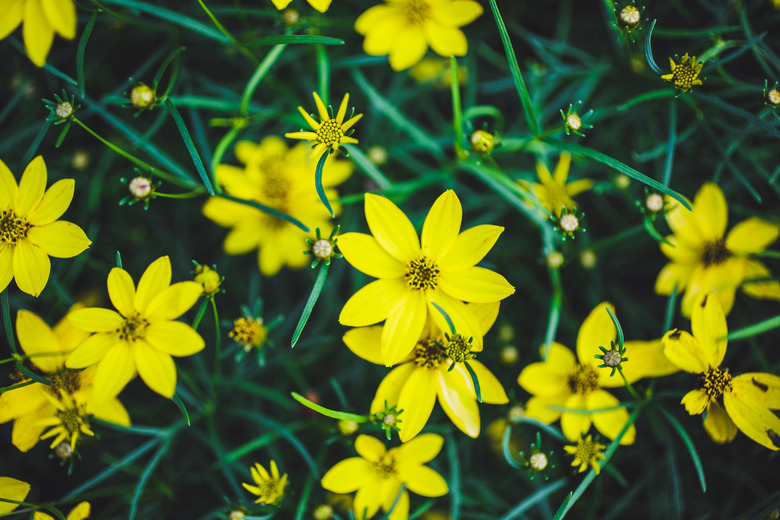What Parts Of A Flower Are Involved In Reproduction?
Flowers serve a reproductive purpose for the plant. However, they consist of both sterile tissue and parts directly devoted to reproduction.
Function
Function
Although humankind uses them for ornamentation, flowers evolved with a sexual-reproductive purpose for plants, according to the Arizona Cooperative Extension. Even the bright colors and sweet scents that make them so attractive for your garden promote reproduction by attracting pollinators, even if they don't directly play a role in producing sex cells or fertilization.
Female Structures
Female Structures
Botanists call the female structures of the plant the gynoecium or pistil, which includes the stigma, style and ovary. Pollen clings to the stigma, where it journeys down to fertilize the seed inside the ovary. The pistil emerges as a single stalk at the center of the flower.
Male Structures
Male Structures
The male structures, or androecium, consist of stamens atop filaments. Stamens produce pollen, each grain of which contains two sperm cells. Wind and pollinators carry the pollen to the female pistil, where the pollen grows into a long tube that extends into the ovary. The dusty yellow club-topped stamens surround the pistil in most flowers.
Cite This Article
MLA
Walls-Thumma, Dawn. "What Parts Of A Flower Are Involved In Reproduction?" sciencing.com, https://www.sciencing.com/parts-flower-involved-reproduction-7445820/. 22 November 2019.
APA
Walls-Thumma, Dawn. (2019, November 22). What Parts Of A Flower Are Involved In Reproduction?. sciencing.com. Retrieved from https://www.sciencing.com/parts-flower-involved-reproduction-7445820/
Chicago
Walls-Thumma, Dawn. What Parts Of A Flower Are Involved In Reproduction? last modified March 24, 2022. https://www.sciencing.com/parts-flower-involved-reproduction-7445820/
